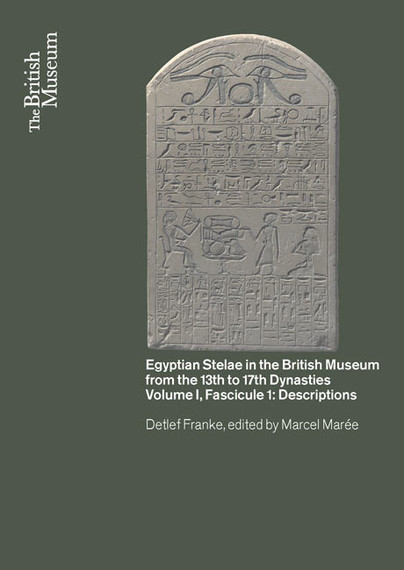
Format: Hardback
Pages: 288
ISBN: 9780714119878
Pub Date: 30 Sep 2013
Imprint: British Museum Press
Description:
The British Museum holds the largest collection of Middle Kingdom stelae outside Egypt. This is the first full publication of the collection: the scenes and inscriptions of each of the 42 stelae are described in detail, with textual notes and explanatory diagrams. This is an outstanding work of scholarship by unrivaled authorities in the field.
The scenes and inscriptions of each of the forty-two stelae are described in detail, with full translations, textual notes and explanatory diagrams. Each catalog entry includes a wide-ranging general commentary on phraseology, formulae and titles, on the importance of each stela in its historical and social context, and on aspects of epigraphy and iconography. Wherever possible, stela owners are identified and family trees given.
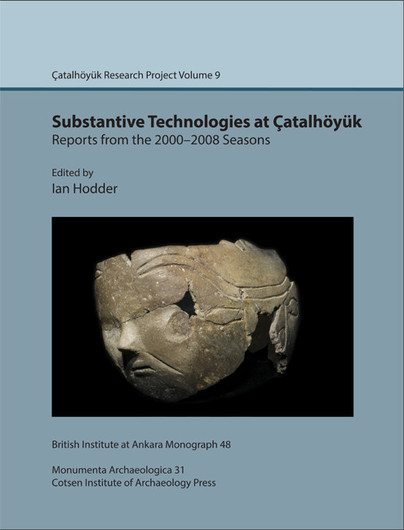
Format: Hardback
Pages: 300
ISBN: 9781898249313
Pub Date: 30 Sep 2013
Imprint: British Institute at Ankara
Series: British Institute at Ankara Monograph
Illustrations: 250 illustrations and 50 tables
Description:
The Neolithic site of Çatalhöyük in Turkey has been world famous since the 1960s when excavations revealed the large size and dense occupation of the settlement, as well as the spectacular wall paintings and reliefs uncovered inside the houses. Since 1993 an international team of archaeologists, led by Ian Hodder, has been carrying out new excavations and research, in order to shed more light on the people who inhabited the site. The present volume reports on the results of excavations in 2000-2008 that have provided a wealth of new data on the ways in which humans became increasingly engaged in their material environment such that ‘things’ came to play an active force in their lives.
A substantial and heavy involvement was with alluvial clays that surrounded the site. In the absence of large local stone, humans became increasingly involved in the extraction and manipulation of clay for a wide range of purposes – from bricks to ovens, pots and figurines. This heavy use of clays led to changes in the local environment that interacted with human activity, as indicated in the first section of the volume. In the second section, other examples of material technologies are considered all of which in various ways engage humans in specific dependencies and relationships. For example, large-scale studies of obsidian trade have drawn a complex picture of changing interactions between humans over time. The volume concludes with an integrated account of the uses of materials at Çatalhöyük based on the analysis of heavy residue samples from all contexts at the site.
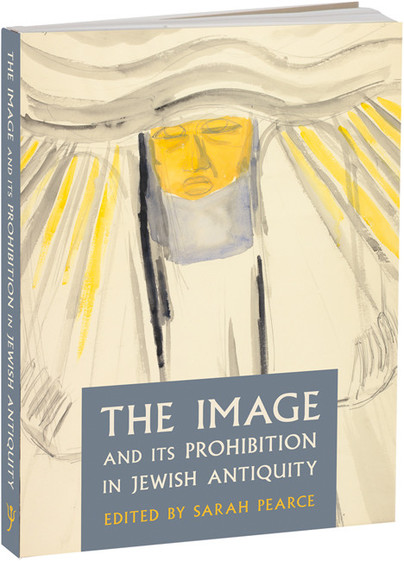
Format: Paperback
Pages: 288
ISBN: 9780957522800
Pub Date: 30 Sep 2013
Imprint: Journal of Jewish Studies
Description:
Against the commonly held opinion that ancient Judaism was an artless culture, this sumptuously illustrated book offers new ways of looking at art in Jewish antiquity. Leading experts, under the editorship of Sarah Pearce, skilfully explore different functions of images in relation to their prohibition by the Second of the Ten Commandments. The visual world of ancient Judaism often reflects a tense confrontation between Mediterranean, artful classical culture and the image-filled, yet law-inspired biblical literature.
Readers will encounter a rich collection of objects and texts analysed in different contexts, from Solomon’s Temple to late antiquity. The imageless God of monotheistic Judaism combated the polytheistic cults of Israel’s neighbours with the use of symbols. Figurative, floral and geometrical embellishments of synagogues served as decoration and not for worship. Narrative biblical scenes in the Dura-Europos synagogue played an educational and political role in Jewish society on the outskirts of the Roman Empire. Antique Jewish art exercised a profound influence on medieval Islam and even on the modern Western visual world. This book is aimed at both the scholarly world and all readers interested in religion and art.
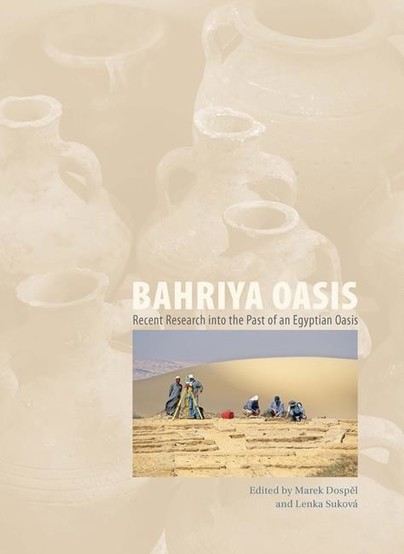
Format: Hardback
Pages: 314
ISBN: 9788073084578
Pub Date: 31 Aug 2013
Imprint: Czech Institute of Egyptology
Illustrations: 8 pages of colour plates
Description:
Through its 14 chapters, this book presents the outcomes of the recent exploration of Bahriya, an Egyptian oasis located in the Western Desert about 350 km south-west of Cairo. Part I of the volume is devoted to the southern part of the Oasis (also known as El-Hayz) and the exploration carried out there by the team led by the Czech Institute of Egyptology, Charles University in Prague.Part II concentrates on the northern part of the same oasis bringing forth the results of scholarly research by the French team led by Université de Strasbourg.
Complementing the two parts is Part III with the final chapter which deals with water-management in the Western Desert as a whole. Containing chapters written by archaeologists, Egyptologists, philologists and natural scientists, this richly illustrated book attempts at providing as comprehensive picture of the past of the Bahriya Oasis as can be drawn from the hitherto research, encompassing a wide range of aspects from settlement history and environment to material culture and written evidence.Lenka Suková graduated from the Faculty of Arts, Charles University in Prague in 2008. In 2003–2006, she was the Assistant Curator of the Department of Prehistory and Ancient History of the Near East and North Africa of the Náprstek Museum-National Museum in Prague. Since 2007, she works in the Czech Institute of Egyptology, Faculty of Arts, Charles University in Prague where she is concerned with the research into the history and dynamics of occupation of Eastern Sahara during the Early and Middle Holocene. Since 2009, she is the director of the Institute’s interdisciplinary research project concerned with the prehistoric occupation of Jebel Sabaloka in the Sudan. She is a PhD candidate at the same institute, with a research project focused on the rock art of Northeast Africa in the context of landscape and archaeology.Marek Dospěl holds master’s degrees in History, Latin, Egyptology, and Classical Archaeology and is currently pursuing a Ph.D. programme at the Czech Institute of Egyptology, Charles University in Prague. He is involved in the Institute’s exploration of Bahriya as a specialist in late antique and Byzantine Egypt, with focus on Coptology, documentary papyrology, and the interplay between the informative value of contextualized texts on the one side and archaeological data on the other. His publications include studies on Egyptian Christianity, material culture of late antique Egypt, as well as editions and annotated translations of Greek, Latin, and Coptic texts – both literary and documentary. He has also extensively published on Franciscan missionaries in Ottoman Egypt and Abyssinia.
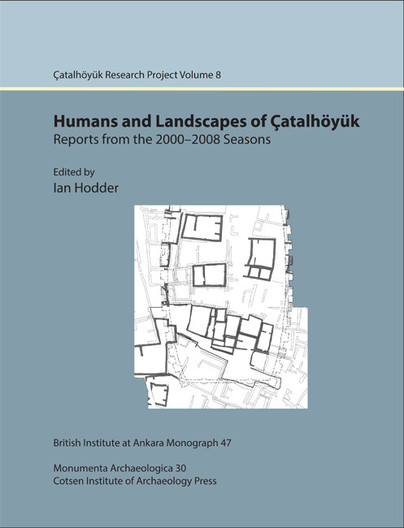
Format: Hardback
Pages: 320
ISBN: 9781898249306
Pub Date: 31 Aug 2013
Imprint: British Institute at Ankara
Series: British Institute at Ankara Monograph
Illustrations: 250 figures and 50 tables
Description:
The Neolithic site of Çatalhöyük in Turkey has been world famous since the 1960s when excavations revealed the large size and dense occupation of the settlement, as well as the spectacular wall paintings and reliefs uncovered inside the houses. Since 1993 an international team of archaeologists, led by Ian Hodder, has been carrying out new excavations and research, in order to shed more light on the people who inhabited the site. The present volume reports on the results of excavations in 2000-2008 that have provided a wealth of new data on the ways in which the Çatalhöyük settlement and environment were dwelled in.
A first section explores how houses, open areas and middens in the settlement were enmeshed in the daily lives of the inhabitants, integrating a wide range of different types of data at different scales. A second section examines subsistence practices of the site’s inhabitants and builds up a picture of how the overall landscape was exploited and lived within. A third section examines the evidence from the skeletons of those buried within the houses at Çatalhöyük in order to examine health, diet, lifestyle and activity within the settlement and across the landscape. This final section also reports on the burial practices and associations in order to build hypotheses about the social organization of those inhabiting the settlement. A complex picture emerges of a relatively decentralized society, large in size but small-scale in terms of organization, dwelling within a mosaic patchwork of environments. Through time, however, substantial changes occur in the ways in which humans and landscapes interact.

Format: Paperback
Pages: 221
ISBN: 9788073084448
Pub Date: 31 Jul 2013
Imprint: Czech Institute of Egyptology
Description:
The book includes contributions of the following authors: Hartwig Altenmüller, Ladislav Bareš, Miroslav Bárta, Andreas Effland, Martin Fitzenreiter, Hans Goedicke, Peter Jánosi, Dieter Kurth, Christian Loeben, Juan Carlos Moreno García, Jana Mynářová, Anthony Spalinger, Miroslav Verner, Hana Vymazalová, Wolfgang Waitkus.
Making and Breaking the Gods
Christian Responses to Pagan Sculpture in Late Antiquity
Format: Hardback
Pages: 350
ISBN: 9788771240894
Pub Date: 31 Jul 2013
Imprint: Aarhus University Press
Description:
Drawing on both textual and archaeological sources, this book discusses how Christians in Late Antiquity negotiated the sculptural environment of cities and sanctuaries in a variety of ways, ranging from creative transformations to iconoclastic performances. Their responses to pagan sculpture present a rich window into the mechanisms through which society and culture changed under the influence of Christianity. The book thus demonstrates how Christian responses to pagan sculpture rhetorically continued an old tradition of discussing visual practices and the materiality of divine representations.
Focusing in particular on the Egypt and the Near East, it furthermore argues that Christian responses encompass much more than mindless violence and need to be contextualised against other social and political developments, as well as local traditions of representation.
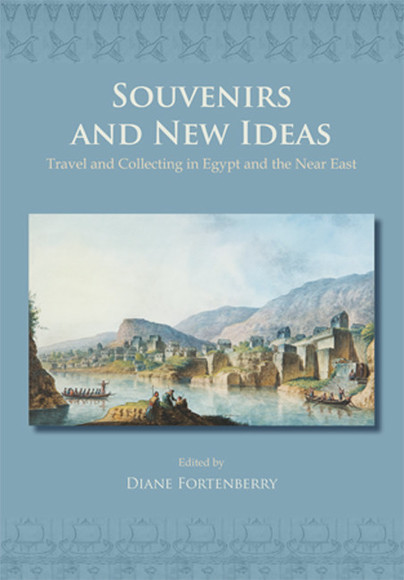
Format: Paperback
Pages: 200
ISBN: 9781842178157
Pub Date: 30 Jun 2013
Series: ASTENE Publications
Description:
During the 18th and 19th centuries, many travellers aimed to record their travels through Egypt, Mesopotamia, the Levant and Turkey by collecting souvenirs and mementos of places they had visited. This natural inclination took many different guises: from innocent activities such as making diaries and sketches, gathering academic knowledge or taking photographs, to acquiring souvenirs, very often antiquities. Other, more unscrupulous, travellers undertook journeys specifically to ‘collect’ antiquities to form the basis of museum collections or to profit by re-selling them.
Souvenirs and New Ideas explores the human desire to retain the memory of a journey by ‘collecting objects’ with a series of essays examining the motivation of a variety of different travellers ranging from intrepid female solo travellers to European royalty. The acquisitions of these individuals ranged from tales of folklore and academic knowledge to the wholesale looting of Egyptian antiquities. Although the habit of ‘collecting antiquities’ is deplored and condemned today, this volume sheds light on the attitudes behind the practice and seeks to strengthen our current beliefs about the value of cultural patrimony.

Format: Paperback
Pages: 196
ISBN: 9780856688607
Pub Date: 03 Jun 2013
Imprint: Australian Centre for Egyptology
Series: ACE Studies
Description:
Scenes from the Old Kingdom tombs represent our main sources for the study of daily life of private individuals. Written by a number of specialists with years of research, this monograph deals with various aspects of life in ancient Egypt, presented in an accessible manner to the scholar and lay-person alike. Richly illustrated with an excellent selection of photographs and drawings, the book aims to bring the reader as close as possible to the Egyptian sources, allowing them to delve into the world behind the scenes.
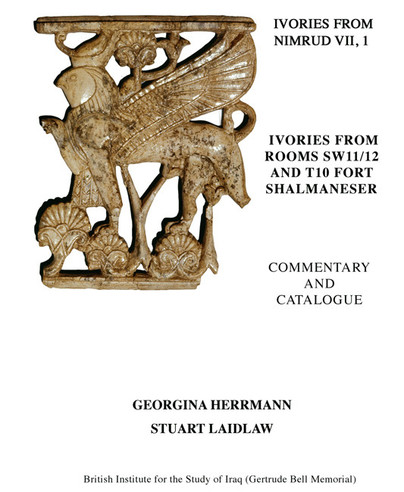
Format: Hardback
Pages: 676
ISBN: 9780903472296
Pub Date: 31 May 2013
Imprint: British Institute for the Study of Iraq
Description:
The Lost Art of the Phoenicians Fifty years have passed since the British School of Archaeology in Iraq raised the last ivory from the soil of Fort Shalmaneser. Literally thousands were found, many of which have already been published inIvories from Nimrud I-V, while VI recorded the outstanding pieces from the North West Palace. Ivories from Nimrud VII, Ivories from Rooms SW11/12 and T10 completes the publication of the assemblages in the Fort, as far as records permit.
The ivories of Room SW11/12 are similar in character to those of Room SW37 and probably represent another consignment of booty, while those of T10 in the Throne Room block include pieces from all four traditions, as well as some entirely new ones.With the primary publication completed, it is now possible to look at these remarkable ivories as a whole rather than studying them by prov¬enance, as is discussed in detail in the Commentary. Not surprisingly, it immediately becomes apparent that the majority can be assigned to the Phoenician tradition. There are at least twice as many Phoenician ivo¬ries than the other Levantine and Assyrian ivories. They form therefore an incredible archive, recording the lost art of the Phoenicians, long famed as master craftsmen.The Phoenician ivories can be divided into two; the finest, the Clas¬sic Phoenician, often embellished with delicate, jewel-like inlays, and the other examples still clearly Phoenician in style and subject. While the Classic pieces were probably carved in a single centre, possibly Tyre or Sidon, the others would have been carved in a variety of dif¬ferent Phoenician centres, located along the Mediterranean seaboard.Designs on Syrian-Intermediate ivories are versions of some Phoe¬nician subjects, employing different proportions and styles. They may represent the art of the recently-arrived Aramaean kingdoms, copying their sophisticated neighbours, while North Syrian ivories are entirely different in subject and character and derive from earlier Hittite traditions.The ivories found at Nimrud present a unique resource for studying the minor arts of the Levantine world.
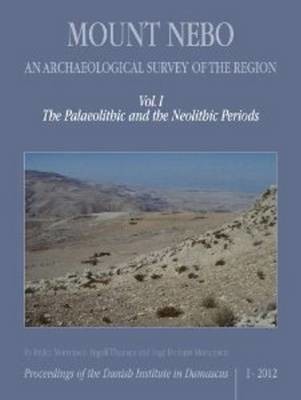
Format: Hardback
Pages: 146
ISBN: 9788771240788
Pub Date: 31 May 2013
Imprint: Aarhus University Press
Description:
During six seasons (1992-1998) an intensive survey of the Mount Nebo region was accomplished under the auspices of the Franciscan Archaeological Institute at Mount Nebo and the Danish Palestine Foundation. It was followed by a brief reconnaissance in 2008. The survey was centered around Siyagha, covering an area of approximately 35 square kilometres.
This volume is dedicated to the description of 79 locations and single finds, which can be attributed to the Stone Age. In the presentation the material has been divided into four chronological groupings, covering the Lower, Middle, Upper-Epipalaeolithic, and the Neolithic periods based on diagnostic artifacts, such as for example Acheulean handaxes, Levallois- and Mousterian points, Neolithic arrowheads, bipolar blade cores, and pottery.

Format: Hardback
Pages: 240
ISBN: 9781842174739
Pub Date: 03 May 2013
Series: Levant Supplementary Series
Description:
The Jordanian badia is an arid region that has been largely protected from modern development by its extreme climate and has preserved a remarkably rich record of its prehistoric past. This is the second of two volumes to document extensive surveys and excavations in the region from Al-Azraq to the Iraqi border over the period 1979-1996. Broadly, it covers the Late Neolithic and Chalcolithic of the eastern badia.
Over time, an outline prehistory of the region has emerged. Late Epipaleolithic campsites have been found in the north-west of the harra in the foothills of Jebel Druze, while the central basalt region saw a floruit of activity in the late Aceramic Neolithic, when it was used extensively for hunting. This volume covers the following period, which witnessed a further spread of campsites and short-term occupation out around the edges of the harra and across the hamad as far as the lands bordering the Euphrates to the north and east. This period was marked by the first appearance of sheep and goat as one element of the steppic economy alongside traditional practices of hunting and foraging. The concluding chapter discusses these changes and proposes models for the introduction of domesticated animals into the steppe as a precursor to a full nomadic pastoral economy.

Format: Paperback
ISBN: 9781782971566
Pub Date: 19 Mar 2013
Series: Current Research in Egyptology
Description:
The thirteenth Current Research in Egyptology (CRE) conference was held from the 27th – 30th March 2012 at the University of Birmingham and once again provided a platform for postgraduates and early career Egyptologists, as well as independent researchers, to present their research. These proceedings for CREXIII represent the wide-range of themes that were offered by delegates during the conference, and cover all periods of Egyptian history; from Predynastic skeletal analysis through to Egyptology during the Islamic Middle Ages. These twelve papers include gender studies, analysis of Egyptian festivals, revisiting of chronological models, archaeological reanalysis of ancient landscapes, as well as social, historical and linguistic studies allowing a new appraisal of many aspects of Egyptian culture and history.
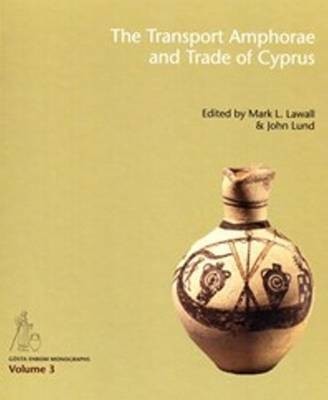
Format: Hardback
Pages: 244
ISBN: 9788771242133
Pub Date: 31 Jan 2013
Imprint: Aarhus University Press
Description:
Placed as a stepping stone on the sea route between Europe and the New East, Cyprus has always been a meeting place of many cultures. Though rarely united politically through many millennia of history - and for extended periods subject to foreign rule - the island nonetheless managed to maintain specific and unique identities. This publication seeks to throw new light on important aspects of the economy of Cyprus between c.
700 BC and AD 700 through a concerted study of the transport amphorae found in and around the island. These standardised containers of fired clay were commonly used for shipping foodstuffs from their places of production to the consumers in antiquity. Completely preserved or found only in fragments, such vessels are a prime source of information about the island's exports and imports of agricultural products, and ultimately about the fluctuations in the economy of Cyprus through a crucial millennium and a half of her history. The jars thus contribute both to our understanding of the changing intensities of Cypriot connections with other centres around the Mediterranean and to the documentation of regional patterning within the island itself.

Format: Hardback
Pages: 200
ISBN: 9781842174890
Pub Date: 11 Jan 2013
Series: Ancient Textiles
Illustrations: 8 colour & 82 b/w illustrations
Description:
In the past, textile production was a key part of all ancient societies. The Ancient Near East stands out in this respect with the overwhelming amount of documentation both in terms of raw materials, line of production, and the distribution of finished products. The thirteen intriguing chapters in Textile Production and Consumption in the Ancient Near East describe the developments and changes from household to standardised, industrialised and centralised productions which take place in the region.
They discuss the economic, social and cultural impact of textiles on ancient society through the application of textile tool studies, experimental testing, context studies and epigraphical as well as iconographical sources. Together they demonstrate that the textile industries, production, technology, consumption and innovations are crucial to, and therefore provide an in-depth view of ancient societies during this period. Geographically the contributions cover Anatolia, the Levant, Syria, the Assyrian heartland, Sumer, and Egypt.
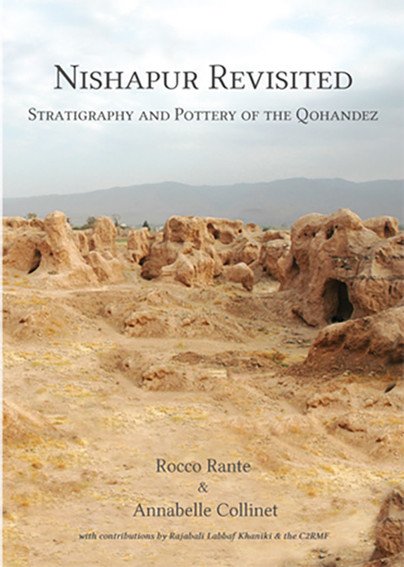
Format: Hardback
Pages: 144
ISBN: 9781842174944
Pub Date: 08 Jan 2013
Illustrations: 105 col illus.
Description:
Nishapur in eastern Iran was an important Silk Road city, its position providing links to central Asia and China, Afghanistan and India, the Persian Gulf and the west. Despite previous excavations there are many unresolved questions surrounding the site; when was the city founded? Is Nishapur a Sasanian city?
Was it founded by the Sasanian king Shapur I or II? The question of chronology of occupation and the ceramic sequence is also problematic particularly for late antiquity and the medieval period, as well as a complete topography of the site. The Irano-French archaeological mission at Nishapur (2004 to 2007) (CNRS-MAEE-Musée du Louvre) focused on the Qohandez, or citadel, the oldest part of Nishapur. Excavations were conducted in different areas of the mound, in order to address these questions. After an introduction to the site and the former American and Iranian excavations, this book presents the stratigraphy and the pottery of the site. The difficulties involved in establishing a precise history of the site, as well as the complexities of studying the pottery led to a program of analysis undertaken by the Research Centre of French Museums (C2RMF). Chemical and petrographic analysis, thermoluminescence (TL) dating and archaeomagnetism analysis as support to the TL results were done. A pottery database has been created regrouping the stratigraphical and laboratory analyses data, in order to manage and present an organised corpus of 1000 samples. The combination of the data from the stratigraphical and laboratory analyses gives an accurate and completely new chronology of the site. Moreover, the study also brought to light a new typological sequence of the ceramic, as well as new data about the pottery production at Nishapur.















